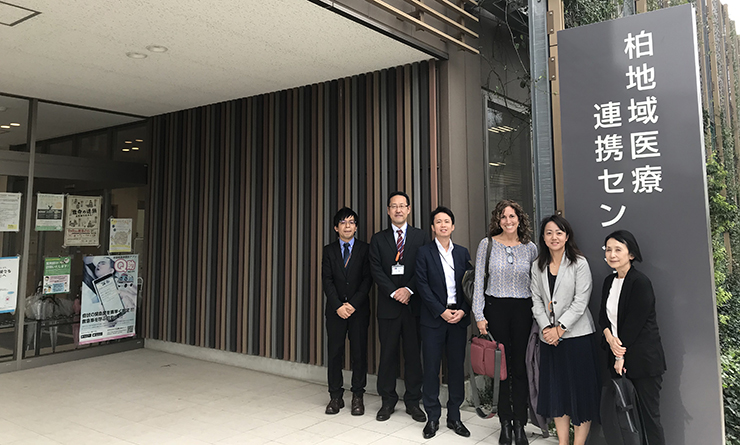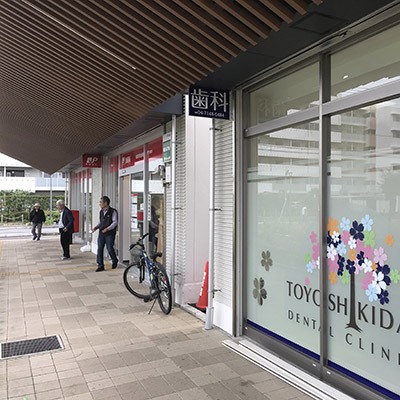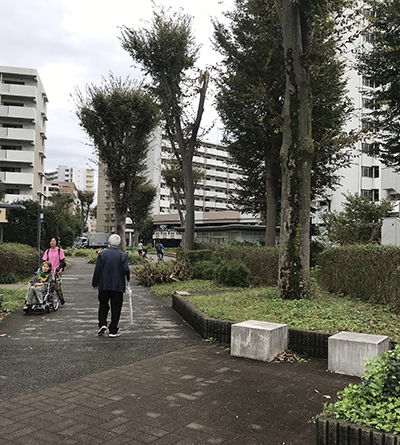AARP Hearing Center
Intergenerational Housing at Scale: Lessons from Japan
By Stephanie K. Firestone, November 25, 2019 10:29 AM

Note: This blog is part of the series, Importing Age-Friendly Innovations, which analyzes trends and explores age-friendly policy and programmatic innovations in other countries that may be adaptable to the US context. Additional posts explore rightsizing as a multigenerational housing strategy and multigenerational living.
Japan is currently the fastest-aging society on earth. How does a local community respond, when 40 percent of its residents are already 65 years of age or older? That is what I set out to learn by visiting Kashiwa City’s Toyoshikidai housing complex revitalization project, an effort to intentionally address the health and well-being of all generations.
Concrete Background
Work on Toyoshikidai began back in 2004. Behind the massive regeneration project is a collaborative effort of Kashiwa City, the quasi-governmental Urban Renaissance Agency, and the Institute of Gerontology at the University of Tokyo. Through a phased demolition and rebuild of 103 apartment buildings on approximately 80 acres, they are creating a total of 4,666 housing units of differing sizes that suit a range of populations, from single older individuals to families with small children, and everything in between.
As a tourist in Japan, I witnessed how people walk a lot and climb stairs all the time, and the original five-story structures on the Toyoshikidai site reflected that way of life. They were built with no elevator—a situation that has become untenable for a rapidly aging society that is living much longer—and so the buildings replacing the old ones are fitted with elevators and other age-friendly design elements. The redevelopment effort also entails adding retail services and amenities that attract residents of all ages, such as a supermarket, post office, library, children’s center, and public green spaces including a new zone demarcated as the “community center.”

Services Tailored for Seniors
A key objective of the revitalization project is widespread adoption and availability of home care so that residents are able to age in place. The plan therefore includes elements such as a home-visit nursing station, small-scale and multifunctional in-home care service station, home care support clinic, primary physician’s clinic, integrated community care support center, childcare facilities, and pharmacy. In addition, a “medical collaboration center” enables coordination of an inter-professional lifestyle support team made up of a physician, dentist, pharmacist, visiting nurse, and care manager. The center also provides consultation to the public and trains various professionals involved in home care.

Cocofump
A central development in Toyoshikidai is the 105-room Cocofump complex, which provides assisted living as well as independent living spaces for those who seek the peace of mind of having medical care on-site. Built with some support from the national government, this complex is a private bare-bones, condominium-like edifice. Rent structures cater to people on fixed incomes by ensuring that residents pay roughly the same rates through the years, preventing the need to relocate. Original residents, in fact, pay approximately half the rate of newcomers.
Another distinguishing characteristic of Cocofump is the other uses that are co-located on the property. A variety of medical services are offered in spaces that are rented out on the ground floor of the building. These are operated through a concierge-type service and are offered to residents of both the building as well as the entire complex. According to a national rule, Cocofump must arrange for nursing staff to visit each person in their room and provide a checkup service once every day—even for those in independent living. Dementia care rooms, meanwhile, offer both long-term as well as short-term stays (i.e., 1-2 nights), providing a respite opportunity for caregivers of people living with dementia.
One of the elements that truly brings the environment to life, however, is the dynamic presence of people of literally all ages. CocoKids kindergarten and a nursery school are housed within the building, providing opportunities for older adults, from independent living residents to those in the memory care unit, to interact with the youngest community members. Such opportunities include reading and social engagement as well as occasional joint festivals and other community activities.

Multigenerational and Intergenerational
The interactive nature of the community is evident in still other ways. For example, the complex intentionally employs older adults. Those efforts, in fact, are part of a national solution. Due to Japan’s aging population and lower replacement rate, there is a shortage of workers throughout the country. In response, both the government’s labor department and private human resources firms target older adult workers. They provide opportunities for fulfilling work with a guaranteed minimum wage, based on flexible, part-time and work-share schedules, so older people can work “at a comfortable pace.” At Toyoshikidai, older adults manage community gardens, provide social services and care assistance, support childcare and education, and more.
Through interventions such as design and engagement, Toyoshikidai serves people old and young and addresses the need for connection across the generations. The success story of Toyoshikidai can be understood through the lens of two housing and livability concepts—multigenerational compared to intergenerational living. Multigenerational housing is often thought of as being physically suitable and appealing to multiple generations, whereas intergenerational living is more intentional about the interaction across generations. The Toyoshikidai housing complex revitalization project achieves both.

Stephanie K. Firestone is a senior strategic policy advisor for international affairs with AARP, focusing on health and age-friendly communities.































































